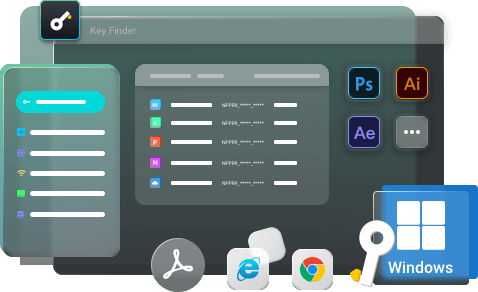Table of Contents
An excellent tool for securing and storing your passwords is Google Password Manager. That's why it's so incredibly annoying when it stops working! Many users encounter this frustrating experience, and sadly, it happens to them often.
That's why we are here to assist you. This article from EaseUS aims to be your lifeline when Google Password Manager is not loading. We'll cover four efficient fixes with detailed troubleshooting steps.
Alternative to Google Password Manager - EaseUS Key Finder
Are you in a rush? If you don't have much time at hand to navigate through all the different browsers to recover your saved passwords, then you should go for EaseUS Key Finder, which is a convenient and efficient solution. It's a very reliable and quick tool that's been designed to steer you toward retrieving your lost passwords on Google Chrome.
Here's the time for you to go ahead and do it! With EaseUS Key Finder at the ready, you can say goodbye to password recovery headaches.
Step 1. Click "Internet & Network" under Password.
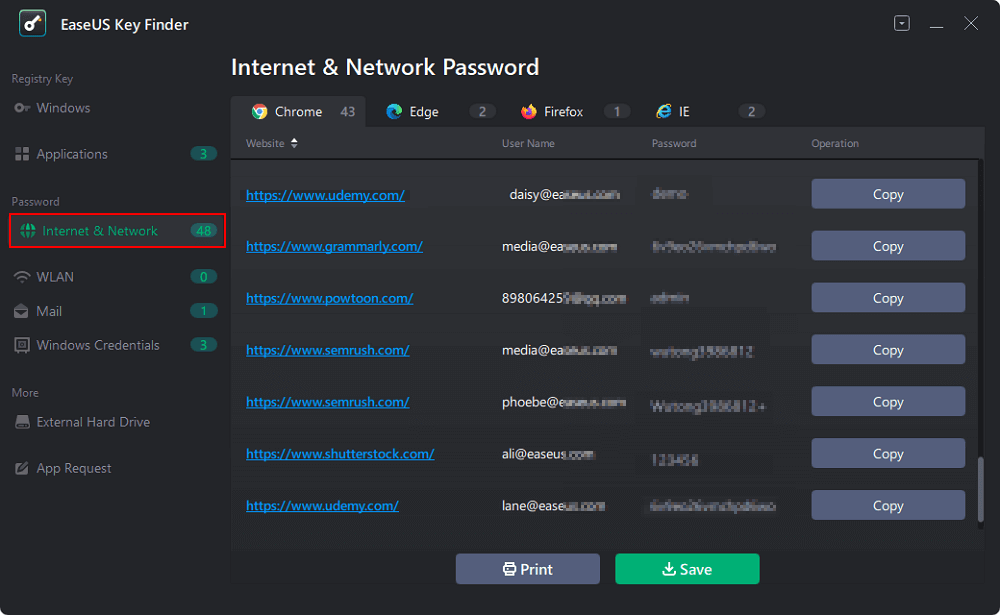
Step 2. Check Browser Accounts & Passwords of Chrome, Edge, Firefox, and IE.
"Copy" - Click it, then directly paste.
"Save" - Save as a PDF file.
"Print" - Connect Printer to print.
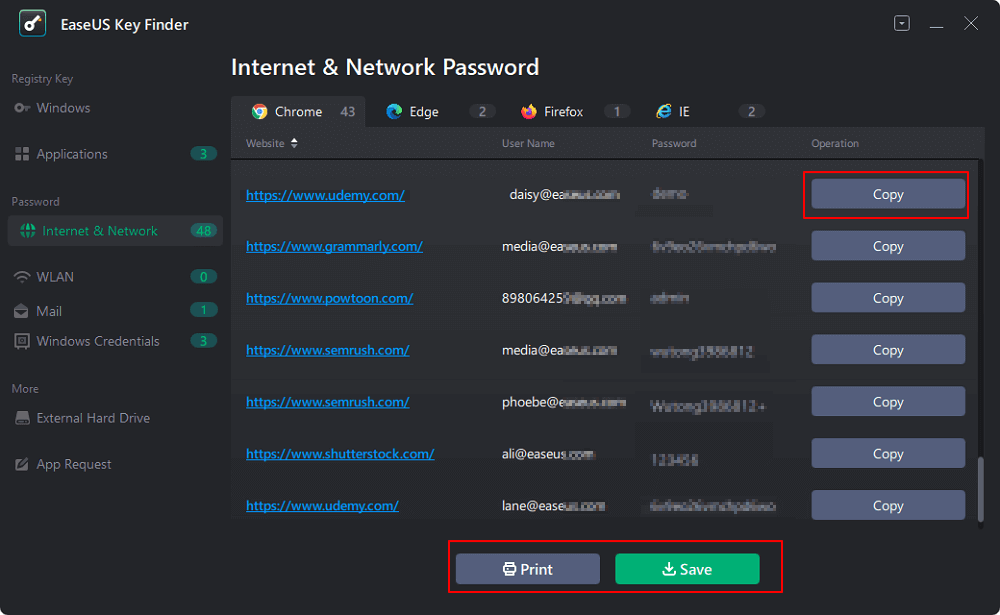
Why EaseUS Key Finder?
- Fast and Easy: Very easy to restore saved passwords with one or two clicks.
- Wide Compatibility: It is compatible with all types of browsers, including Chrome, Firefox, Edge, and other commonly used web browsers.
- Beyond Passwords: Find product keys for installed programs, including Adobe apps and Microsoft Office.
- User-Friendly: Simple interface, thus catering to the technology-illiterate ones.
How to Fix Google Password Manager Not Loading
If Google Password Manager is not working correctly, don't panic! This section will guide you through four troubleshooting solutions to get your saved passwords back online.
- Fix 1. Clear Cache and Cookie
- Fix 2. Re-enable Password Manager
- Fix 3. Log out and Log in again
- Fix 4. Reinstall Chrome Browser
Fix 1. Clear Cache and Cookie
Google Password Manager can encounter unexpected problems when old browser data, such as cache and cookies, are present. Websites use cookies to remember your preferences, track your activity, and store them on your computer. Alternatively, a cache stores website files so that future visits load faster.
While helpful, outdated versions can cause glitches. To fix this, you need to clear caches and cookies. Here are the steps:
Step 1. Identify the "three vertical dots" that are placed in the upper right area of the Chrome browser. From the menu, select "Settings."
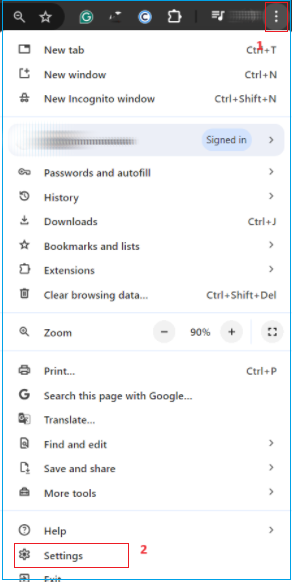
Step 2. In the Settings page, find the "Advanced" section and scroll down until you find it. Choose these options for Click-to-Expand. Tap on the "Clear browsing data" option and select it. This will open a new pop-up window.
Step 3. Choose the "Advanced" tab in the pop-up box.
Step 4. Ensure that only the following options have checkmarks beside them:
- "Cookies and other site data"
- "Cached images and files"
Once you've verified the selections, click the "Clear data" button.
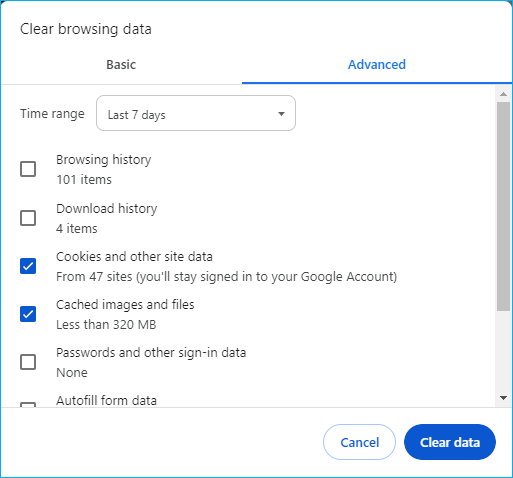
Check if your Google Password Manager is loading now.
Fix 2. Re-enable Password Manager
Sometimes, the best solutions come along, which are simple but are the best for resolving a problem. To be sure Google Password Manager is causing the trouble, let's re-enable it with quick steps:
Step 1. Open Chrome browser, and in the top-right corner, click three dots.
Step 2. Make sure to go to "Passwords and Autofill" in the menu that just came up. You may be asked to re-enter your Google account's password.
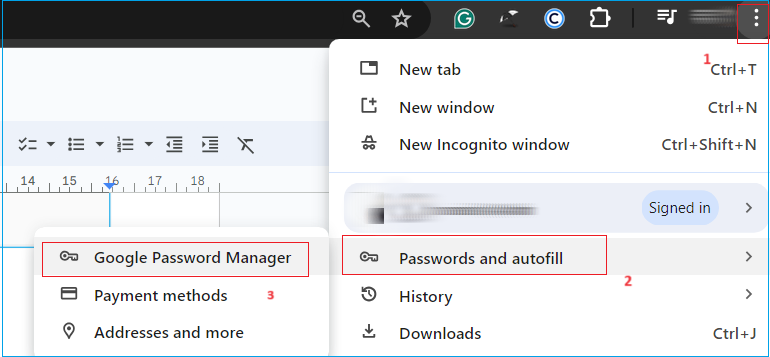
Step 3. Now, when you need to adjust your Passwords, locate the settings. They will be labeled "Offer to save passwords" and "Sign in automatically." Turn on both switches.
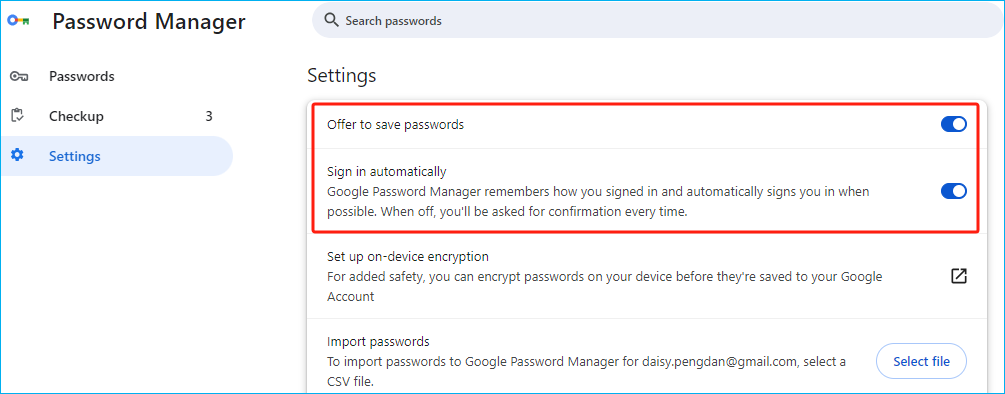
Step 4. Test it by creating a new account on any website. Chrome should prompt you to generate a strong password.
Step 5. Visit a familiar website and try logging in. Your password manager should automatically fill in the details you saved.
Step 6. If your browser is already on, deactivate the "Offer to save passwords" and "Sign in automatically" functions. Then, re-enable these options. This is one of the simplest refresh options that often fixes unexpected errors.
Fix 3. Log out and Log in again
Sometimes, the most straightforward answer is the best answer! By logging out of your account and then logging in again, you can quickly fix a lot of the random errors that sometimes pop up on Google Password Manager. Here's how:
Step 1. Make sure to save any open work in your Chrome browser. Logging out will temporarily terminate all your sessions.
Step 2. Tap the menu icon on the Chrome toolbar on the browser's top right corner.
Step 3. Choose the option to sign out of your Google account. To do so, open Gmail and click your profile picture, then select “Sign out.”
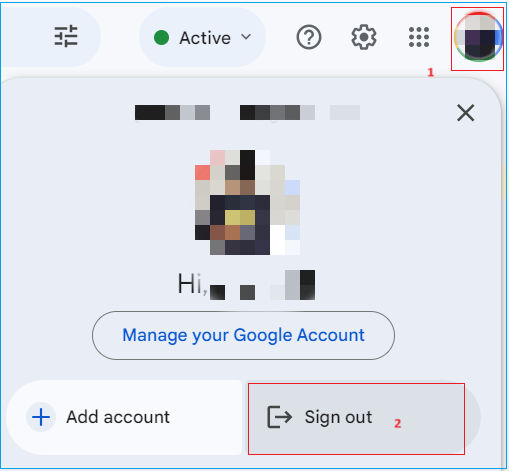
Step 4. Close all Chrome windows. Open Chrome again and log into your Google account again. This will trigger a new data synchronization.
Check if you can now view saved passwords on Chrome as expected.
Fix 4. Reinstall Chrome Browser
Try this last alternative if the previous fixes have failed to resolve your password manager issues. Passwords, history, and other data are linked to your Google account, so a fresh Chrome installation can clear out stubborn problems without losing valuable information.
Follow the standard uninstallation procedure to uninstall your Chrome browser. Once uninstalled, go through these steps:
Step 1. Now, head to Google Chrome's official website and download the latest version of it.
Step 2. Run the installer file by clicking "Next" after downloading it.
Step 3. Since Chrome has already been downloaded, the first step is to log into your Google account. This will automatically sync your saved passwords and other data.
Now, check if your Google Password Manager is back in working order. If none of these fixes help, go back to the alternative method so that you can get your passwords back quickly.
Share this article if you find it useful in resolving the Google Password Manager not working issue.
Conclusion
This guide describes how to resolve loading issues with Google Password Manager. Before doing anything else, it would help to clear the cache and make sure your settings are correct. If the problem persists, try reinstalling Chrome.
Still struggling? Consider EaseUS Key Finder if you want to recover and manage passwords in an advanced way that goes beyond Google Password Manager.
FAQs on Google Password Manager Not Loading
Follow this FAQs section if you still have queries related to the topic discussed on the page.
1. Why are we offline with Google Password Manager?
There could be a few reasons:
- Check Your Settings: Make sure that password saving and autofill are active in your Chrome browser's settings.
- Need an Update? An aged-out browser can cause bugs. Be sure that you have the newest Chrome update.
- Website Limitations: Keep in mind that some sites might be developed with designs incompatible with the autofill function.
2. How do I turn on autofill on Google?
Let's make sure autofill is enabled in Chrome:
- Open Chrome and sign in to your Gmail account.
- Click the three-dot icon at the top right corner and select "Passwords and Autofill" > "Google Password Manager" from the menu.
- Navigate to the Settings page and select the "Sign in automatically."
3. Why has my Autofill stopped working?
Google's auto-fill stop working could be caused by unintentional closure in Settings or corruption to account information.
Was This Page Helpful?
Oliver is an EaseUS professional writer who dares explore new areas. With a passion for solving tech issues with straightforward guides for common users, Oliver keeps honing his writing craft by developing in-depth solutions for disk and partition management, computer boot-up issues, file transfer, etc.
Related Articles
-
How to See Facebook Password in Google Chrome
![author icon]() Sherly/2024/01/24
Sherly/2024/01/24 -
How to Reset Epic Games Without Email and Password
![author icon]() Roxanne/2024/05/06
Roxanne/2024/05/06 -
How to Find Office 2016/2019 Product Key (Windows 11 Available)
![author icon]() Tracy King/2023/11/24
Tracy King/2023/11/24 -
How to Find A Chrome Account and Password
![author icon]() Tracy King/2023/11/24
Tracy King/2023/11/24
About EaseUS Key Finder
EaseUS Key Finder offers complete solutions for you to efficiently find Windows or Windows Server product keys, discover Offce, Adobe, and other installed software serials, and find WiFi codes, etc, successfully in simple clicks.
Product Reviews
